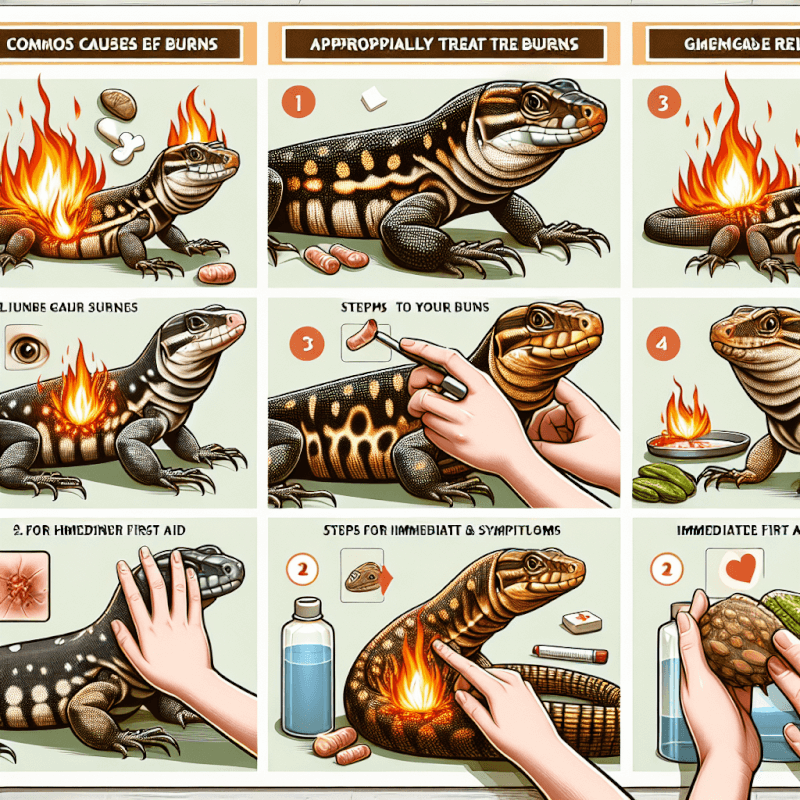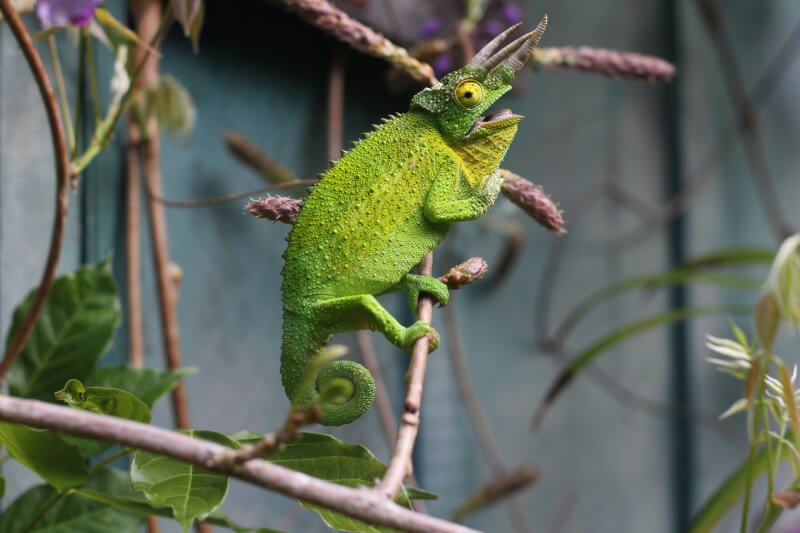If you find yourself facing the unfortunate situation of a burn on your reptilian friend, don’t panic! This article is here to guide you on how to effectively treat those burns and ensure your scaly companion recovers quickly and comfortably. From identifying the severity of the burn to providing proper first aid, we’ll cover all the essential steps you need to take. So, whether your reptile accidentally touched a hot surface or got too close to a heat lamp, fret not, for help is just a few paragraphs away!

Understanding Reptile Burns
Reptile burns can be a serious concern for pet owners, as they can cause pain and discomfort for your scaled friend. Understanding the causes and identifying the signs of reptile burns is crucial in providing the necessary first aid and seeking veterinary assistance when needed. By following proper care and prevention methods, you can ensure the well-being and recovery of your reptile.
What Causes Reptile Burns?
Reptile burns can occur due to various reasons, including improper heating and lighting setups, contact with hot surfaces, or exposure to excessively high temperatures. It’s essential to maintain appropriate temperature gradients within your reptile’s enclosure to prevent burns. Failure to do so can lead to thermal burns, which are caused by prolonged contact with surfaces that are too hot.
Identifying Reptile Burns
Identifying reptile burns can be challenging, as reptiles may not show obvious signs of injury. However, some common indicators may include redness, blisters, swelling, or even charred skin. It’s crucial to regularly inspect your reptile for any signs of burns, especially after any change in the heating or lighting setup, or if your pet has had direct contact with a hot surface.
First Aid for Reptile Burns
Providing immediate first aid for reptile burns can make a significant difference in the recovery process. Here are some crucial steps to follow:
Safety Precautions
Before administering first aid, it is important to ensure your own safety. Use gloves and take caution to avoid any potential bites or scratches from your reptile, as they may be in pain and more likely to act defensively.
Assessing the Severity of the Burn
Determining the severity of the burn is essential in providing appropriate first aid. Superficial burns may only affect the outer layers of the skin, while deeper burns may penetrate deeper tissues. If you’re unsure about the severity of the burn, it’s recommended to consult a veterinarian.
Handling the Reptile
Gently and carefully handle your reptile, ensuring that you do not further aggravate the burn or cause any additional injury. Avoid putting pressure on the affected area and be mindful of your reptile’s comfort throughout the process.
Cleaning the Burned Area
Cleaning the burned area is crucial to prevent infection. Use a mild antiseptic solution or a specific reptile-safe wound cleanser to gently clean the burn. Avoid using any harsh chemicals or ointments that may further irritate the area.
Treating Minor Reptile Burns
Minor reptile burns can often be treated at home, provided that they are not severe. However, it’s always best to consult a veterinarian for professional advice and evaluation. Here are some steps you can take to treat minor reptile burns:
Applying Cool Water
Immediately after the burn occurs, gently flush the affected area with cool (not cold) water. This helps to remove any heat and provides relief to your reptile. Avoid using ice or icy water, as this can cause further damage to the skin.
Using Aloe Vera or Ointments
After gently cleaning the burn, you can apply a thin layer of a reptile-safe burn ointment or aloe vera gel to the affected area. These soothing agents can help promote healing and provide relief from discomfort. Be sure to use products specifically formulated for reptiles, as some human products may contain ingredients that are toxic to them.
Providing Pain Relief
Minor burns can cause discomfort to your reptile. Consult your veterinarian for guidance on appropriate reptile-safe pain relief options, such as analgesics or topical creams. It’s essential to follow your veterinarian’s recommendations and dosage instructions to ensure your reptile’s safety.
Seeking Veterinary Assistance
While minor reptile burns may be treated at home, more severe burns often require professional veterinary care. It’s important to know when to consult a vet for burn treatment:
When to Consult a Vet
Consult a veterinarian immediately if the burn is severe, covers a large area, appears deep, or if your reptile is showing signs of distress or deteriorating health. Additionally, seeking veterinary assistance is crucial if the burn does not improve within a few days or if your reptile’s condition worsens.
Preparing for the Vet Visit
When bringing your reptile to the vet for burn treatment, ensure you have all necessary information, such as your reptile’s species, age, enclosure setup, and any relevant details about the burn incident. This information will assist the vet in providing appropriate care and understanding the best course of treatment for your reptile.

Preventing Burns in Reptiles
Prevention plays a crucial role in ensuring your reptile’s safety and well-being. By implementing proper care measures and understanding the specific needs of your reptile, you can greatly reduce the risk of burns. Here are some tips to prevent burns in reptiles:
Maintaining Proper Temperatures
Maintain proper temperature gradients within your reptile’s enclosure to ensure they have access to both warm and cooler areas. This helps prevent thermal burns caused by prolonged exposure to excessively hot surfaces.
Avoiding Hot Surfaces
Reptiles are curious creatures and may unknowingly come into contact with hot surfaces, such as heat lamps or heating pads. Always ensure that heating elements are properly secured and inaccessible to your reptile to prevent accidental burns.
Using Proper Heating and Lighting Sources
Invest in high-quality heating and lighting sources that are specifically designed for reptile enclosures. Make sure to follow the manufacturer’s instructions for installation and maintenance to minimize any risks of burns or electrical hazards.
Providing Hiding Spots
Offering hiding spots in your reptile’s enclosure helps them regulate their body temperature and provides a safe place to retreat from potentially hot surfaces. Natural or artificial hides can create a comfortable and secure environment for your reptile.
Special Considerations for Specific Reptile Species
Different reptile species have unique care requirements, and this extends to treating and preventing burns. Here are some species-specific considerations when it comes to burn care:
Burn Care for Snakes
Snakes, especially those with delicate scales, are prone to thermal burns from heat pads or incorrectly positioned heat lamps. Ensure that the heat sources are set up correctly and that there are no gaps or direct contact between the heating elements and your snake’s enclosure.
Burn Care for Lizards
Lizards, such as bearded dragons or geckos, may accidentally come into contact with hot surfaces, such as heated rocks. Regularly inspect their enclosures and accessories, ensuring that there are no exposed heating elements or potentially dangerous areas that could cause burns.
Burn Care for Turtles
Turtles should have access to a basking platform with a heat lamp for thermoregulation. Position the heat lamp securely, ensuring that the turtle cannot reach it or come into contact with it. Additionally, be cautious of using any tank decorations that could overheat and potentially cause burns.

Recovery and Rehabilitation
Providing an optimal healing environment and closely monitoring your reptile’s recovery are essential for their overall well-being. Here are some key considerations for the recovery and rehabilitation period:
Creating an Optimal Healing Environment
Ensure that your reptile’s enclosure is clean, properly maintained, and provides suitable temperature and humidity levels. A clean and stress-free environment promotes healing and prevents infection. Monitor the healing progress of the burn regularly.
Assisting with Feeding and Hydration
During the recovery period, your reptile may experience a loss of appetite or difficulty eating due to discomfort. Offer a varied and nutritious diet to promote healing. In some cases, you may need to assist with feeding, using methods recommended by your veterinarian.
Monitoring Healing Progress
Regularly monitor the burn site for any signs of improvement or potential complications, such as infection. Take note of any changes in your reptile’s behavior, appetite, or overall well-being. Promptly consult a veterinarian if you observe any concerning signs or if the burn does not show signs of improvement.
Potential Complications and Suggested Treatments
While providing proper care and treatment, it’s crucial to be aware of potential complications that may arise during the recovery process:
Infection Prevention and Treatment
Burned skin is vulnerable to infection, so it’s important to maintain proper hygiene and clean the affected area regularly. If you suspect an infection, consult a veterinarian for appropriate treatment options, such as antibiotic ointments or oral medications.
Dealing with Scar Tissue
In some cases, burns can lead to the formation of scar tissue. While this is a natural part of the healing process, it’s important to monitor the scar tissue for any potential restrictions or deformities. If necessary, consult a veterinarian for further assessment and advice on managing scar tissue.

Supporting Emotional Well-being of Your Reptile
Reptiles can experience stress and anxiety during the recovery process, so it’s crucial to provide a stress-free environment and emotional support for your scaled companion. Here are some ways to support your reptile’s emotional well-being:
Providing a Stress-Free Environment
Ensure that your reptile has a comfortable and secure enclosure with proper hiding spots and a consistent daily routine. Minimize any potential stressors, such as sudden loud noises or handling, to create a calm and nurturing environment.
Bonding with Your Reptile during Recovery
Spending quality time with your reptile can help alleviate stress and promote a sense of security. Engage in activities that your reptile enjoys, such as gentle handling, offering favorite treats, or providing enrichment activities. Remember to respect your reptile’s boundaries and provide them with ample opportunity to rest and recover.
Conclusion
Understanding reptile burns and providing proper care is crucial for the well-being of your scaly friend. By implementing preventive measures, promptly administering first aid, seeking veterinary assistance when needed, and providing a supportive recovery environment, you can help your reptile recover from burns and prevent future injuries. Remember to always consult a veterinarian for professional advice tailored to your reptile’s specific needs. With proper care and attention, your reptile can safely recover and thrive.


